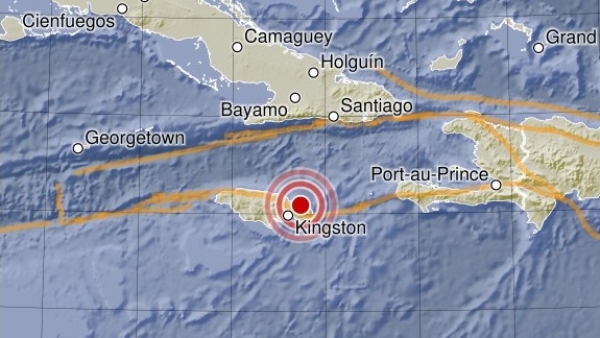The quake was located about 2 miles west-northwest of Hope Bay, according to the U.S. Geological Survey. It occurred at a shallow depth of 6 miles. There were no immediate reports of injuries or serious damage.
In a media release, the Jamaica Public Service (JPS) confirmed that the earthquake had affected power supply to 132,000 of its customers in the parishes of Kingston and St Andrew, St Catherine, Manchester, and St James. The light and power company said electricity to customers outside the Corporate Area were restored within a few minutes, and to people in Kingston and St Andrew in phases during the day.
“The affected power plants, which belong to both JPS and Independent Power Producers (IPPs) were: West Kingston Power Plant, and Jamaica Private Power Company, Rockfort, and Hunts Bay,” the company said.
While small earthquakes are common in and around Jamaica — some 200 a year — large ones are rare. The devastating Port Royal earthquake occurred in 1692, with a portion of the town sinking into the sea. Then in 1907, a quake struck the capital, Kingston, killing more than 1,000 people. Another big quake was reported in March 1957, affecting mostly western Jamaica, according to the University of the West Indies in Mona, Jamaica. The island sits atop the Enriquillo–Plantain Garden fault zone, which it shares with Haiti and the Dominican Republic, according to the U.S. Geological Survey.


